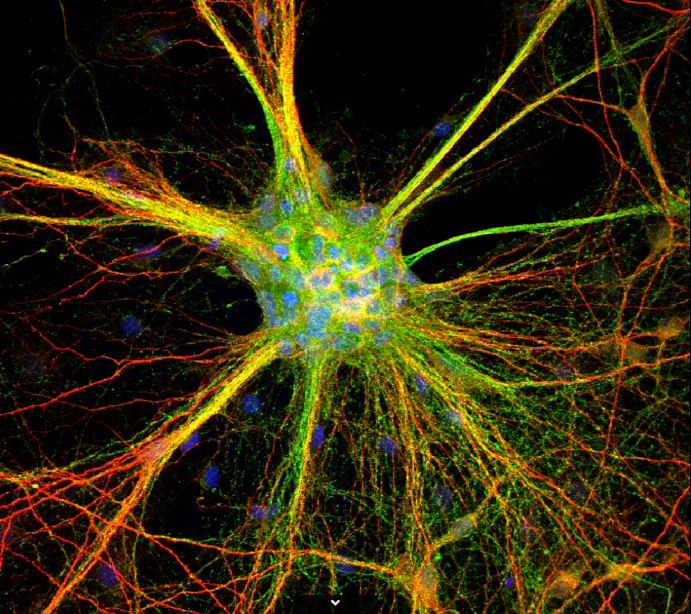Monday, 22 August 2022
Neurons as Works of Art
 If you visit the website that I’m going to tell you about today, you’re likely to kill a lot of time there, as I just did. But if visiting a museum to enjoy beautiful art isn’t really killing time, then neither is visiting NeuroArt® —an online gallery of gorgeous images of neurons and the brain, produced with dyes, tracers and a variety of other technical methods.
If you visit the website that I’m going to tell you about today, you’re likely to kill a lot of time there, as I just did. But if visiting a museum to enjoy beautiful art isn’t really killing time, then neither is visiting NeuroArt® —an online gallery of gorgeous images of neurons and the brain, produced with dyes, tracers and a variety of other technical methods.
NeuroArt invites scientists from all over the world to submit images of the brain in all of its wondrous complexity and resulting visual beauty. Not only will you be blown away by all the fascinating shapes and psychedelic colours, but you can also learn a lot about the brain and nervous system, because for each image, you can display a brief description by either hovering your mouse over its thumbnail or clicking the “i” icon beneath the enlarged version.
The Image Gallery is the part of this website that most closely resembles a museum experience; it must contain pretty close to 400 images! Which reminds me about two scientists whose artworks I’ve discussed before on this blog. In a 2012 post, I wrote about Greg Dunn and his highly precise, shimmering “reflective microetchings”, created using data generated by various imaging techniques. And in 2020, I wrote about the intricate pastel-coloured paintings of David Goodsell, which interpret electron-microscope images of the inside of human cells in a way that makes their complexity intelligible as well as enchanting to the eye.
We tend to have relatively few mental images of the complex world inside our bodies. We say, “Yeah, it’s complex,” and leave it at that. But technologically generated images of living cells, like those on NeuroArt, as well as artworks created by scientists like Dunn and Goodsell, help us truly take in all this complexity and realize that complexity and beauty very often go together.
From the Simple to the Complex | Comments Closed







